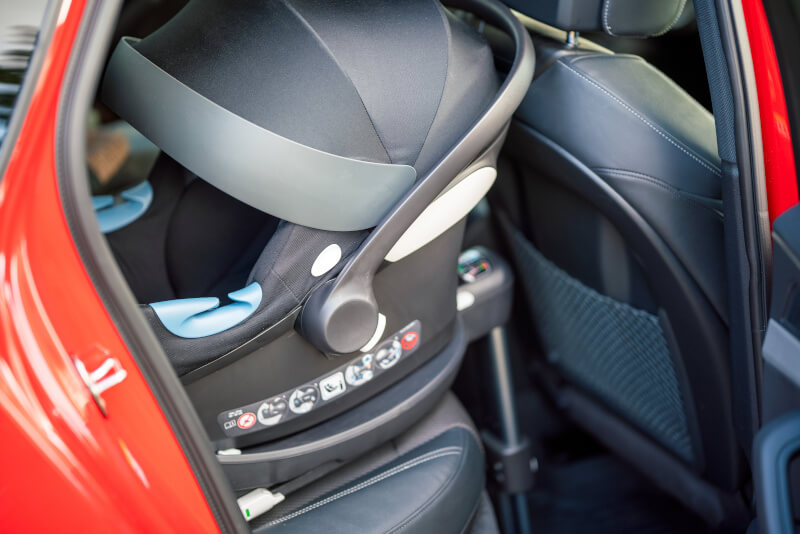Join the conversation
We love to hear from our customers. Connect with us today and let’s start a conversation.
...searching

Buying a baby car seat before your little one arrives is a smart move. You’ll need a seat that’s suitable for a newborn and fits your car perfectly.
If you’re planning to give birth at a hospital or birth centre, having the car seat ready is essential for getting your newborn home safely.
It’s worth practising how to install the seat beforehand, so you’re not scrambling with it on the day.
When shopping for a car seat, always try a few models in your car to find the best fit. Look for a retailer with trained staff who can help you with this process.
Check if your car is equipped with Isofix connectors – a feature that makes installing baby and child seats much simpler and safer.
Isofix is a universal system built into most modern cars, typically hidden between the seat cushions, which locks the car seat directly into the vehicle's chassis.
Isofix car seats are especially valuable as they reduce the chance of incorrect fitting, which is a common issue with seatbelt-fitted seats.
The system provides a solid and secure attachment, giving parents peace of mind that the seat is correctly installed every time. However, not all cars have Isofix points, so if your car lacks them, look for a seat that can also be fitted using a seatbelt.

If your baby will regularly be travelling in a different car – for example, with grandparents or other family members – make sure the car seat fits in their car as well.
Some manufacturers provide online tools showing which cars their seats are compatible with.
Always select a seat based on your baby’s current height and weight, and avoid buying a second-hand one.
Used car seats could have been damaged in an accident, may be missing parts, or may not meet the latest safety standards.
If you’re accepting one from friends or family, make sure you know its full history, that it isn’t too old, and that it comes with the original instructions.
Think about how you’ll be using the car seat, too. If you expect to be lifting your baby in and out of the car frequently, a lightweight seat with a base that stays in the car might be more practical.
Lastly, make sure your car seat is EU approved by looking for the “E” mark label.
i-Size is a newer European safety standard for baby and child car seats, developed as part of regulation ECE R129.
It is gradually replacing the older R44/04 standard, with the aim of increasing safety across the board.
i-Size seats usually attach to Isofix points, but some can be installed using a seatbelt.
It's essential to check how the seat is fitted, particularly if your car doesn’t have Isofix.
The i-Size regulation also emphasises keeping children in rear-facing seats for longer, as this offers better protection for a child’s head and neck in the event of an accident.
For more information, the Royal Society for the Prevention of Accidents (RoSPA) has a dedicated section on i-Size car seats on their website.
Car seats are generally divided into three groups, based on your baby’s age and weight:
You can also find combination seats that cover multiple groups, such as group 0+/1, which can be used from birth until your child weighs 18kg (around 4 years old).
It’s always safest to keep your child in a rear-facing seat for as long as they fit, as these seats offer the best protection in the event of a collision.
To view the latest UK laws, visit the .gov website.

Never place a rear-facing car seat in the front passenger seat if there’s an active airbag – it’s both dangerous and illegal. Even forward-facing seats in the front aren’t ideal. The back seat is always safer for children.
Ensure the car seat is installed correctly by following the manufacturer’s instructions. Look out for safety events in your local area where experts demonstrate how to fit car seats. These are often held in supermarket or shopping centre car parks.
When it comes to using the seat, always place your baby into the car from the pavement side and ensure they are securely strapped in, following the manufacturer’s instructions. If you’re unsure, ask for a demonstration when buying the seat.
By following these tips, you can ensure your baby is safe and secure on every car journey, giving you peace of mind while on the road.

We love to hear from our customers. Connect with us today and let’s start a conversation.